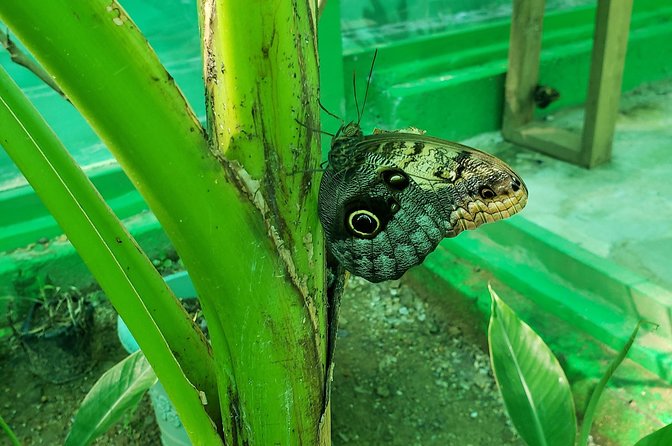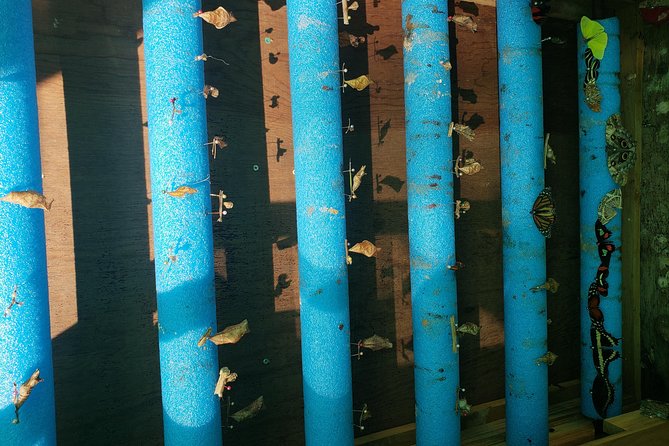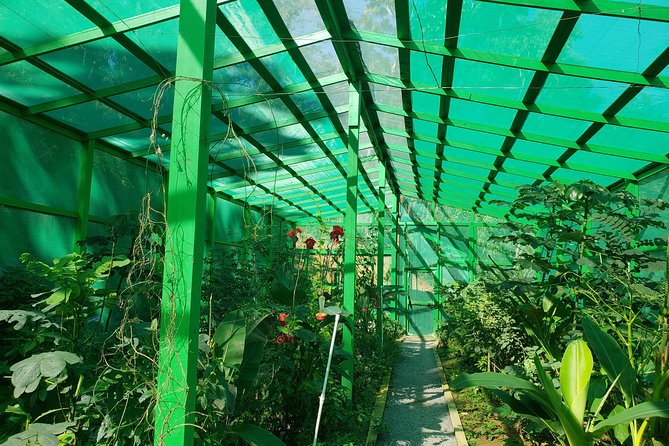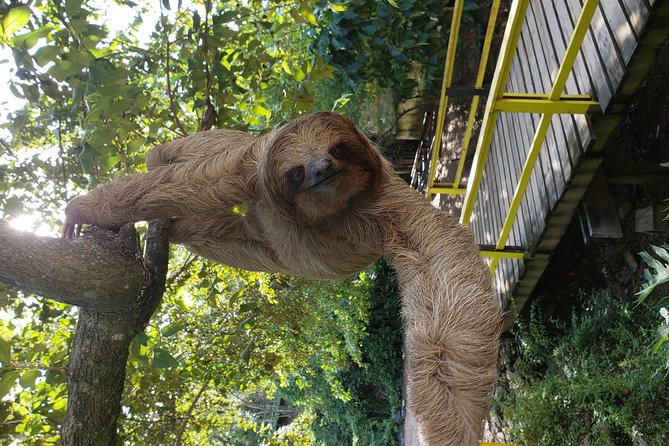Roatan’s history and culture weave a fascinating narrative where indigenous Paya and Garifuna influences meet the colonial shadows of Spanish and British settlers. The island pulses with vibrant traditions, seen in lively celebrations like Garifuna Settlement Day, where music and dance breathe life into the past. Amid tales of pirate escapades and the allure of modern eco-tourism, Roatan presents a unique blend of experiences that captivate the curious. Yet, beneath the surface of its colorful festivities lies a deeper story waiting to be uncovered, one that reveals the essence of this enchanting island.
Good To Know

- Roatan’s history is shaped by indigenous Paya and Garifuna cultures, European colonization, and its role as a pirate hideout.
- The island’s culinary heritage features dishes like fish in coconut milk, reflecting a blend of local ingredients and cultural influences.
- Local festivals, such as Garifuna Settlement Day and the Summer Carnival, celebrate Roatan’s diverse traditions with music, dance, and vibrant costumes.
- Eco-tourism has transformed Roatan into a popular destination, promoting sustainable experiences and showcasing its rich cultural and historical heritage.
- Modern Roatan culture combines traditional practices with contemporary influences, evident in music, art, and culinary experiences throughout the island.
Overview of Roatan’s History
Roatan, an enchanting island nestled in the Caribbean, boasts a rich tapestry of history shaped by indigenous cultures, European colonization, and the vibrant mix of influences that continue to define its identity today.
Initially inhabited by the Paya and Garifuna people, the island saw the arrival of Spanish explorers in the 16th century, who sought to claim its lush landscapes.
Over time, Roatan became a refuge for pirates and a hub for the slave trade, intertwining its fate with the global maritime economy.
In the 19th century, British influence emerged, particularly through the hotel of banana plantations.
Today, remnants of this complex heritage can be seen in the island’s architecture, traditions, and the warm spirit of its people, inviting visitors to explore its storied past.
Interested in history? More Roatan historical sites we've covered
Indigenous Cultures of Roatan

The island’s vibrant indigenous cultures, primarily the Paya and Garifuna peoples, have long played a pivotal role in shaping its unique identity and traditions.
The Paya, known for their rich oral history, weave tales that echo the island’s spirit, while the Garifuna bring a lively blend of African, Caribbean, and indigenous influences, evident in their music and dance.
Traditional drumming and storytelling resonate during community gatherings, fostering a strong sense of identity. Their vibrant crafts, from intricate beadwork to colorful textiles, showcase cultural pride.
The Garifuna’s language, a UNESCO-recognized heritage, reflects their rich ancestry. Together, these cultures not only enrich Roatan’s history but also invite visitors to experience a living tapestry of resilience and creativity.
Colonial Influences on Roatan

Colonial influences have significantly shaped Roatan’s social fabric and architectural landscape, leaving an indelible mark that reflects a complex history of conquest and cultural exchange.
Spanish colonizers introduced their language, religion, and customs, which blended with the indigenous traditions to create a unique cultural tapestry. The remnants of colonial architecture, like quaint churches and wooden houses, dot the island, telling stories of a bygone era.
Plus, the arrival of British settlers in the 18th century brought new agricultural practices and trade dynamics, further altering the island’s identity.
This rich blend of influences is evident in Roatan’s vibrant festivals, culinary delights, and the warm hospitality of its people, embodying a history that continues to thrive in modern times.
The Role of Pirates

Amidst the turquoise waters and lush landscapes, pirates once roamed the shores of Roatan, leaving behind tales of adventure and intrigue that continue to captivate the imagination. These seafaring outlaws, drawn by treasure and trade routes, used the island’s hidden coves as strategic hideouts. Legends of notorious pirates like Blackbeard and Captain Morgan weaving through the region add to Roatan’s mystique. Their presence influenced local folklore, shaping the island’s rich cultural tapestry.
| Pirate Name | Notable Actions |
|---|---|
| Blackbeard | Blockaded Charleston |
| Captain Morgan | Raided Spanish settlements |
| Henry Morgan | Established piracy code |
| Bartholomew Roberts | Captured over 400 ships |
Development of Roatan Tourism
Over the years, Roatan has transformed from a hidden gem into a thriving tourist destination, attracting visitors with its stunning beaches, vibrant marine life, and rich cultural heritage.
The island’s development has been fueled by investments in infrastructure, including hotels, restaurants, and recreational facilities, catering to diverse travelers.
Eco-tourism flourishes as visitors seek sustainable experiences, such as snorkeling, diving, and exploring the lush landscapes.
Cruise ships regularly dock at the island, bringing waves of travelers eager to discover its beauty.
Local entrepreneurs have embraced this growth, offering guided tours that highlight Roatan’s unique history and culture.
As tourism flourishes, the community continues to balance modernization with preserving the island’s enchanting charm, ensuring Roatan remains a captivating destination for years to come.
- Private Tour Knowing Roatan With Professional Guide
- Monkeys & Sloth Hangout,Chocolate Factory,Rum Factory, Island Tour/Beach
- Roatan Half Day Zip Line Combo Beaches Monkeys and Sloth Hangout
- Shore Excursion: Half-Day Glass Bottom Boat Tour With Monkey, Sloths Hang-Out
- ATV, Zipline, Sloth Park and Beach
- 5 Dive Scuba Diving Package in Roatan
Local Festivals and Traditions
Roatan’s vibrant local festivals and traditions showcase the island’s rich cultural tapestry, celebrating its diverse heritage through lively music, colorful parades, and delicious cuisine.
Each year, residents eagerly participate in events like the Garifuna Settlement Day, honoring the island’s Afro-Indigenous roots with traditional drumming, dancing, and storytelling.
The Carnival, held in the summer, brings together locals and visitors alike, filling the streets with vibrant costumes and infectious energy.
Throughout the year, smaller festivals highlight the island’s fishing and agricultural heritage, showcasing crafts and local talents.
These celebrations not only foster community spirit but also preserve Roatan’s unique identity, inviting everyone to join in the merriment and appreciate the island’s cultural richness.
Culinary Heritage of Roatan
Visitors to Roatan often find themselves captivated by the island’s rich culinary heritage, where a fusion of flavors reflects its diverse cultural influences and local ingredients.
Traditional dishes like fish cooked in coconut milk and hearty rice and beans showcase the island’s bounty from land and sea. Street vendors serve up tantalizing snacks, such as fried plantains and spicy ceviche, creating a vibrant food scene that invites exploration.
Locally sourced spices and fresh produce infuse each meal with authenticity. Festivals often highlight regional delicacies, allowing visitors to savor the island’s culinary traditions.
Embracing both indigenous and Caribbean influences, Roatan’s cuisine offers a delightful journey through its history, making every bite a taste of the island’s vibrant culture.
Modern-Day Roatan Culture
The vibrant culture of modern-day Roatan thrives on a blend of traditions and influences, showcasing the island’s rich heritage through lively festivals, music, and art.
Locals celebrate their diverse background with events like the Garifuna Festival, where rhythmic drumming and traditional dances fill the air.
Artisans craft intricate wood carvings and vibrant paintings, reflecting the island’s natural beauty and cultural narratives.
Music resonates throughout the streets, with genres like punta and reggae creating an infectious atmosphere that invites participation.
The culinary scene continues to flourish, featuring traditional dishes alongside international flavors.
This dynamic fusion cultivates a sense of community, where both locals and visitors come together to experience Roatan’s unique identity and vibrant spirit, ensuring its culture remains ever-evolving.
Frequently Asked Questions
What Is Included in the Tour Price?
The tour price includes an air-conditioned vehicle, convenient pickup options, and a guarantee of the lowest price. Travelers can enjoy flexibility with free cancellation up to 24 hours before the experience begins.
How Long Does the Tour Last?
The tour lasts approximately three hours, allowing participants to fully enjoy the experience. During this time, they’ll enjoy informative commentary and engaging activities that highlight the local culture and history of Roatan.
Are There Age Restrictions for Participants?
There aren’t strict age restrictions for participants. Roatan Adventure Tours welcomes individuals of all ages, ensuring everyone can enjoy the experience. However, parents should consider their child’s comfort and ability to participate actively during the tour.
What Should I Wear for the Tour?
For the tour, he recommends lightweight, breathable clothing suitable for warm weather. Comfortable shoes are essential, as well as a hat and sunscreen to protect against the sun. Don’t forget to bring a reusable water bottle!
Can I Bring Food or Drinks on the Tour?
He asked if he could bring food or drinks on the tour. The guide informed him that while snacks are allowed, it’s best to keep it light and manageable to ensure everyone enjoys the experience.
The Sum Up
Roatan’s history and culture weave together a vibrant tapestry, where indigenous roots and colonial legacies coexist harmoniously.
The island pulses with life during its colorful festivals, echoing the rhythms of Garifuna and Spanish traditions.
As modern eco-tourism flourishes, Roatan remains a captivating destination, inviting exploration of its rich past while celebrating its dynamic present.
Visitors leave with a deeper appreciation for the island’s unique heritage, forever touched by its enchanting blend of history and culture.
More Historical Tours in Roatan
More Tour Reviews in Roatan
Looking for something different? Other Roatan activities we've written about
- Monkeys and sloths, private tour , and beach
- 18 Best Guided Tours In Roatan
- 25 Best Tours In Roatan
- 9 Best Sailing Experiences In Roatan
- 10 Best Scuba Diving Experiences In Roatan
- 25 Best Snorkeling Experiences In Roatan
- 5 Best Shopping Tours In Roatan
- 25 Best Boat Tours And Cruises In Roatan
- 20 Best Private Driver Services In Roatan
- 12 Best Guided Tours In Roatan
- 25 Best City Tours In Roatan
- 2 Best Photography Experiences In Roatan
